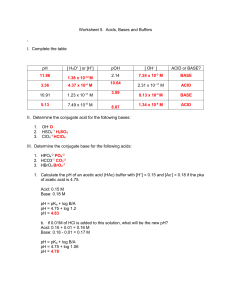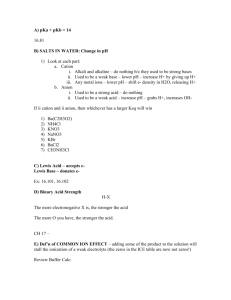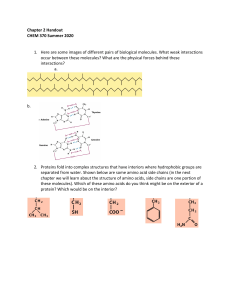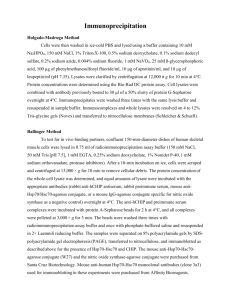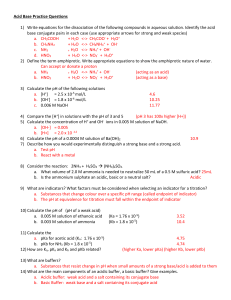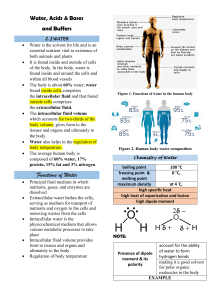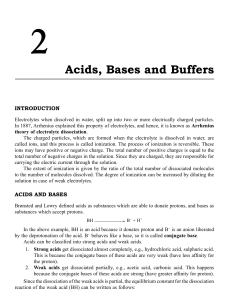Make a Buffer Lab2
advertisement
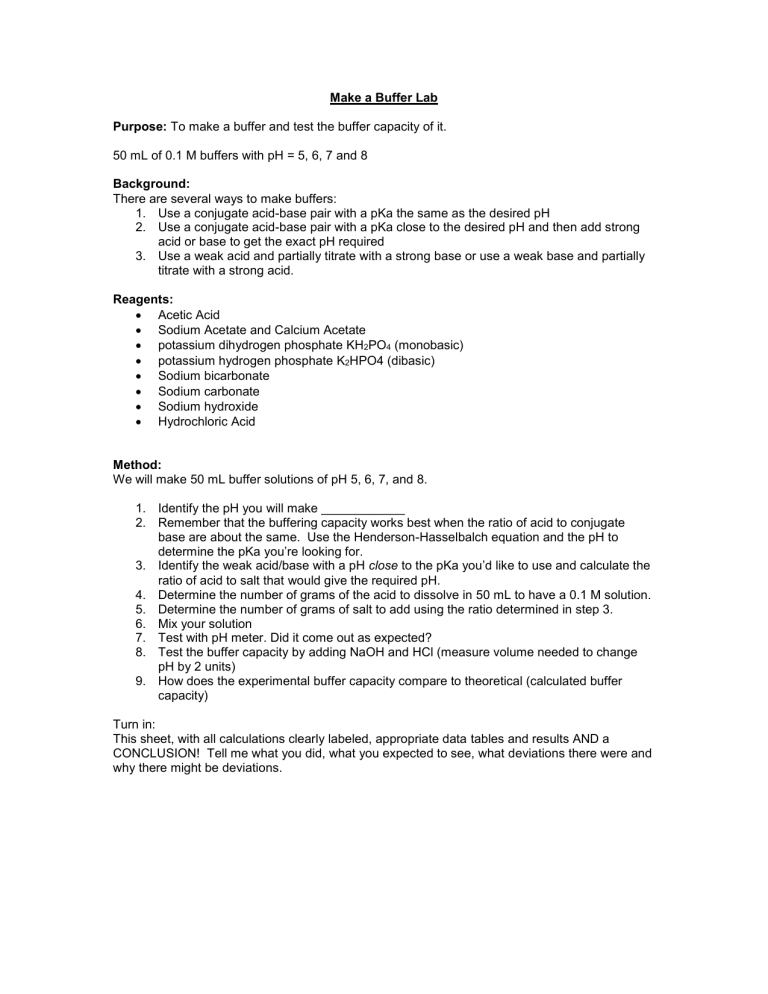
Make a Buffer Lab Purpose: To make a buffer and test the buffer capacity of it. 50 mL of 0.1 M buffers with pH = 5, 6, 7 and 8 Background: There are several ways to make buffers: 1. Use a conjugate acid-base pair with a pKa the same as the desired pH 2. Use a conjugate acid-base pair with a pKa close to the desired pH and then add strong acid or base to get the exact pH required 3. Use a weak acid and partially titrate with a strong base or use a weak base and partially titrate with a strong acid. Reagents: Acetic Acid Sodium Acetate and Calcium Acetate potassium dihydrogen phosphate KH2PO4 (monobasic) potassium hydrogen phosphate K2HPO4 (dibasic) Sodium bicarbonate Sodium carbonate Sodium hydroxide Hydrochloric Acid Method: We will make 50 mL buffer solutions of pH 5, 6, 7, and 8. 1. Identify the pH you will make ____________ 2. Remember that the buffering capacity works best when the ratio of acid to conjugate base are about the same. Use the Henderson-Hasselbalch equation and the pH to determine the pKa you’re looking for. 3. Identify the weak acid/base with a pH close to the pKa you’d like to use and calculate the ratio of acid to salt that would give the required pH. 4. Determine the number of grams of the acid to dissolve in 50 mL to have a 0.1 M solution. 5. Determine the number of grams of salt to add using the ratio determined in step 3. 6. Mix your solution 7. Test with pH meter. Did it come out as expected? 8. Test the buffer capacity by adding NaOH and HCl (measure volume needed to change pH by 2 units) 9. How does the experimental buffer capacity compare to theoretical (calculated buffer capacity) Turn in: This sheet, with all calculations clearly labeled, appropriate data tables and results AND a CONCLUSION! Tell me what you did, what you expected to see, what deviations there were and why there might be deviations.

